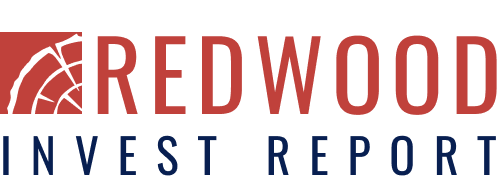NATO’s decision to increase defense spending is casting fresh attention on the strategic role of platinum group metals (PGMs), a suite of critical minerals essential to aerospace and military technologies.
The World Platinum Investment Council (WPIC), in its latest ’60 Seconds in Platinum’ briefing, noted that sustained growth in defense budgets could translate into higher demand for PGMs, which are already deeply embedded in critical defense and aerospace systems.
In the Hague Summit Declaration issued June 25, 2025, alliance leaders committed to raising defense expenditure to 5 percent of GDP annually by 2035, a significant step up from the longstanding 2 percent guideline.
The decision is designed to ensure “individual and collective obligations, in accordance with Article 3 of the Washington Treaty,” while addressing mounting geopolitical uncertainty.
‘Allies agree that this 5 percent commitment will comprise two essential categories of defence investment. Allies will allocate at least 3.5 percent of GDP annually based on the agreed definition of NATO defence expenditure by 2035 to resource core defence requirements, and to meet the NATO Capability Targets,’ the NATO statement reads.
Additionally, ‘Allies will account for up to 1.5 percent of GDP annually to inter alia protect our critical infrastructure, defend our networks, ensure our civil preparedness and resilience, unleash innovation, and strengthen our defense industrial base.’
PGMs, which include platinum, palladium, rhodium, iridium, and ruthenium, have a wide array of military uses thanks to their unique catalytic, conductive, and heat-resistant properties.
In the defense industry, they are commonly found in avionics and electronics, lasers and optical systems, and night-vision goggles.
Aircraft engines rely on platinum and rhodium for temperature sensing, while platinum is also used as a protective plating for turbine blades. In missile systems, platinum and iridium are incorporated into nose cones for their ability to withstand extreme heat.
Military vehicles also draw on platinum for catalytic converters and infrared suppression systems, which help reduce thermal visibility against heat-seeking weapons. Platinum catalysts are integral to advanced fuel reforming systems designed to power next-generation military units.
Other PGMs serve niche but indispensable roles. Ruthenium is applied in chip resistors, while palladium is key in military-grade capacitors. Reed switches, which are magnetic sensors used in high-risk or extreme environments, often depend on rhodium and iridium to ensure durability and safety.
Hydrogen fuel cells gain traction
One of the most promising growth areas highlighted by WPIC is the intersection of PGMs and hydrogen technologies in defense.
Proton exchange membrane (PEM) fuel cells, which rely on platinum catalysts, are being tested in land vehicles, naval applications, and unmanned aerial systems.
In South Korea, Hyundai Rotem, a defense subsidiary of Hyundai Motor (KRX:005380,OTC Pink:HYMTF), is developing what it calls the world’s first hydrogen fuel-cell powered military tank. Meanwhile, Ukraine’s Skyeton recently reported the successful test flight of a hydrogen fuel-cell powered unmanned aerial vehicle (UAV).
Hydrogen propulsion could be particularly transformative in the UAV sector, WPIC noted, since fuel-cell systems offer higher energy density and lighter weight compared to traditional batteries, enabling longer flight times and greater operational flexibility.
In the United States, the Department of Defense is studying a “micro hydrogen supply chain” for the Navy that would generate, store, and distribute hydrogen both at sea and onshore.
As governments integrate their defense strategies with climate and energy transitions, PGMs appear set to play an even larger role. Hydrogen fuel cell adoption in military applications could also further deepen this connection.
“Moves to boost defense and aerospace spending could be positive for platinum group metal demand,” WPIC noted, adding that NATO’s spending pledge and industry innovation highlight how PGMs are extensively used in defense and aerospace applications.
Beyond PGMs
While PGMs are indispensable, they are just one part of a wider set of critical raw materials that underpin modern defense capabilities.
Rare earth elements (REEs), for instance, play a decisive role in the performance of advanced military platforms. According to data from Benchmark Mineral Intelligence, an F-35 Lightning II fighter jet requires around 418 kilograms (kg) of REEs, including neodymium and praseodymium in permanent magnets used for flight control and stealth systems.
Naval platforms demand even more: the Arleigh Burke-class destroyer uses about 2,600 kg of REEs, while the Virginia-class submarine requires roughly 4,600 kg, supporting propulsion, sonar, radar, and missile guidance systems.
The above examples illustrate both the massive material intensity of advanced military assets and the strategic vulnerabilities that come with dependence on external suppliers.
NATO has already flagged these risks. In December 2024, it published a list of 12 defense-critical raw materials essential to Allied security, including aluminium, cobalt, graphite, titanium, tungsten, lithium, and rare earth elements alongside platinum.
For the PGM sector, NATO’s spending pledge may prove to be a tailwind. Yet the bigger picture suggests that other similar resources will all form part of the same strategic equation of countries racing to secure the foundations of a stable supply chain.
Securities Disclosure: I, Giann Liguid, hold no direct investment interest in any company mentioned in this article.

